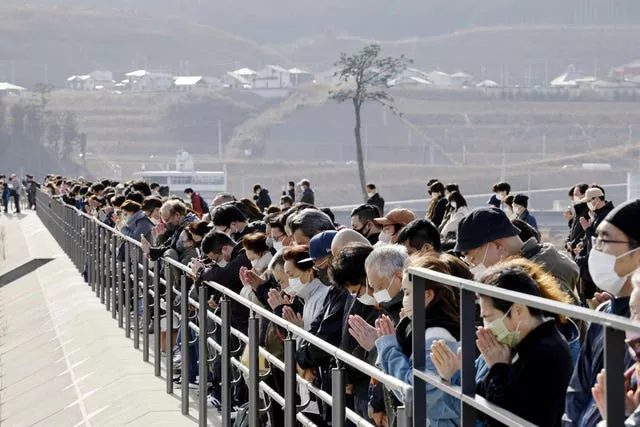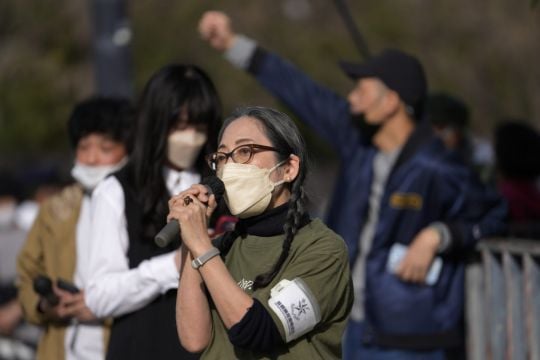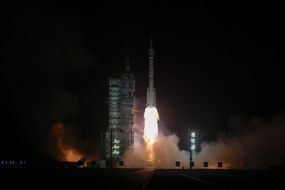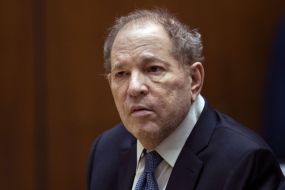Japan has marked the 12th anniversary of a massive earthquake and tsunami – which led to the Fukushima nuclear disaster – with a minute’s silence.
It comes as concerns grow ahead of a planned release of treated radioactive water from the wrecked nuclear power station and the government’s return to nuclear energy.
The nine-magnitude earthquake and tsunami ravaged large parts of Japan’s northeastern coast on March 11 2011 and left more than 22,000 people dead.
A nationwide silence was observed on Saturday at 2.46pm – the moment the earthquake struck.
Some residents in the tsunami-hit northern prefectures of Iwate and Miyagi walked down to the coast to pray for their loved ones and the 2,519 whose remains were never found.

In Tomioka, one of the Fukushima towns where initial searches had to be abandoned due to radiation, firefighters and police used sticks and a hoe to rake through the coastline looking for the possible remains of the victims or their belongings.
At a school in Sendai, in Miyagi prefecture north of Fukushima, participants released hundreds of colourful balloons in memory of the lives lost.
In Tokyo, dozens of people gathered at an anniversary event in a city centre park and anti-nuclear activists held a rally.
The earthquake and tsunami that slammed into the coastal Fukushima Daiichi nuclear plant destroyed its power and cooling functions, triggering meltdowns in three of its six reactors.
They spewed massive amounts of radiation which caused tens of thousands of residents to evacuate.
More than 160,000 people had left at one point and about 30,000 are still unable to return due to long-term radiation effects or health concerns.
Many of the evacuees have already resettled elsewhere and most affected towns have seen significant population declines over the past decade.
At a ceremony, Fukushima governor Masao Uchibori said decontamination and reconstruction has made progress but “we still face many difficult problems”.

He said many people are still leaving and the prefecture is burdened with the clean up and rumours about the effects of the upcoming release of the treated water.
The power station’s operator, Tokyo Electric Power Company Holdings, and the government are making final preparations to release into the sea more than 1.1 million tonnes of treated radioactive water, beginning in the coming months.
The government says the controlled release of the water after treatment to safe levels over several decades is safe, but many residents as well as neighbours China and South Korea and Pacific island nations are opposed to it.
Fishing communities are particularly concerned about the reputation of local fish and their still recovering business.
In his speech last week, Mr Uchibori urged the government to do its utmost to prevent negative rumours about the water release from further damaging Fukushima’s image.
Prime Minister Fumio Kishida renewed his pledge to support the ongoing reconstruction efforts.
“The discharge of the treated water is a step that cannot be delayed,” Mr Kishida told reporters after the ceremony. He repeated an earlier pledge that “a release will not be carried out without understanding of the stakeholders”.
Mr Kishida’s government has reversed a nuclear phase-out policy adopted after the 2011 disaster, and instead is pushing a plan to maximise the use of nuclear energy to address energy supply concerns triggered by Russia’s war on Ukraine while meeting decarbonisation requirements.
Mr Uchibori’s goal is to bolster the renewable energy supply to 100% of the Fukushima prefectural needs by 2040. He said last week that while the energy policy is the central government’s mandate, he wants it to remember that Fukushima continues to suffer from the nuclear disaster.







